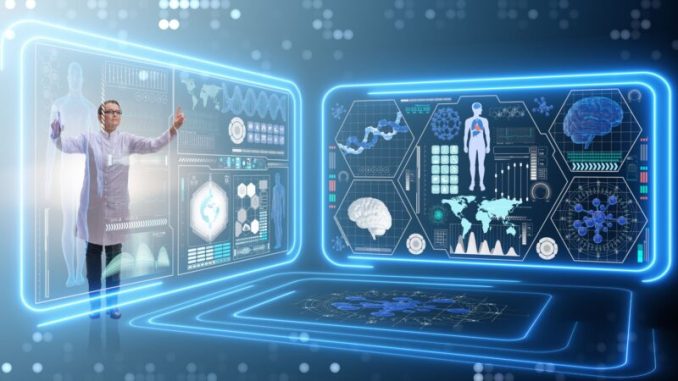
The effect of artificial intelligence(AI) on various sectors is truly tangible and beneficial. But of all the influenced fields healthcare may be one most deeply affected by it. Everything in healthcare, from diagnosing diseases to designing treatment plans for individual patients, AI performs some role or other.
Diagnostics’ evolution
In traditional medical practice, diagnosis has always largely depended upon doctors’ skill and acumen along with laboratory tests or imaging technology. Yet AI’s integration into the field has brought an entirely new model. Algorithms that learn from large datasets of medical images, with a precision beyond that obtainable by humans and often exceeding even human visual acuity. AI systems can for example uncover the early signs of cancer within radiographs: observation beyond anything the human eye might detect.
AI-powered tools like Google’s DeepMind have shown some proficiency in diagnosing problems such as diabetic retinopathy and age-related macular degeneration. By means of deep learning, these systems process millions of pieces of data and then improve their diagnostic accuracy over time. This not only speeds up diagnosis but also somewhat lightens the work load for healthcare staff, freeing them to concentrate on patients.
Treatment plans made better
Apart from diagnosing problems, AI is also helping tailor therapeutic regimens for the individual patient according to his electronic health records, genetic information and way of life. This personalized approach – often termed “precision medicine” – holds great promise in giving better care at lower expense.
For example, AI can predict how patients will react to certain medications based on their genetics. This can save doctors from involvement in prescribing by trial and error. Where this particular capacity is perhaps most useful is in oncology: treatments for a tumor may vary enormously depending on the tumor’s genetic composition.
That’s right, a well-trained AI with a good engine not only gains a doctor’s wisdom surpassed by none and the combined experience of a half-century plus all his colleagues combined! AI can also recognize–on his computer screen–a portent of new diseases. And it’s first-hand information, of course: He only needs to card in those seals for others before passing them along.
A similar machine is also used in operating ships. The furry robot, which makes a suspicious rattling kind of noise, though has the body of a cat, has no whiskers or tail. “If it feels it has done wrong and wants to flee away” (งDII), he uses its mouth to say: You should have achieved your fifty running level now.”
“Ten years ago,” somebody said, “such a plan would have been totally impossible–and shredded!” The next step will be forward, he thinks. It is hard to visualize for all of us how such development progresses in steady stages like that; but viewed from two kilometers (1.2 miles) away–the distance from one end to another on top–this tower must rise gradually.
GlaxoSmithKline is a global pharmaceuticals company with headquarters in Philadelphia, PA. It was incorporated in January of 2000 through the merger between two leading healthcare and biopharmaceutical companies: Glaxo Wellcome plc and Smith Kline & French Laboratories.
Reprint requests: Dr. Pat Singer, MD, NASM, DCC, 1610 Pennsylvania Yenchow University, c/o Morgan, Redwood City, CA 94063; Kevin McCarthy, President & CEO, GM-adox Corporation, c/o MS-DOS & Turbo C Development.
The future for AI in healthcare looks bright, maybe even brighter than the remarkable strides we’ve already seen. Innovations such as natural language processing (NLP) will change how healthcare providers interact with patients, improving the flow of communication as well as making sure that recording errors occur less frequently.
Besides, the power of AI lies not only in producing information but also spreading it out. AI devices can generate on-the-spot health information, letting doctors be clear and present at the precise moment of a procedure, and offering a “cooperative, interactive” experience for patients.
Furthermore, as AI continues to evolve, it seems very likely that it will become even more deeply involved in health care. As a result integrating diagnostics, individual therapies and an orientation to body wellness into our bodies becomes easier than before. It is important to ensure responsible applications of these technologies, so they supplement the competences of medical professionals and do nothing to jeopardize patients’ safety or their rights to red clover.
In conclusion, AI is not merely an instrument; it is changing the face of health care. By embracing AI-based solutions, we not only change diagnostics and treatment methods whatsoever from far away most of the time for everyone. Rather we achieve a world in which health care is closer to hand all citizens regardless of whether they are old or young.